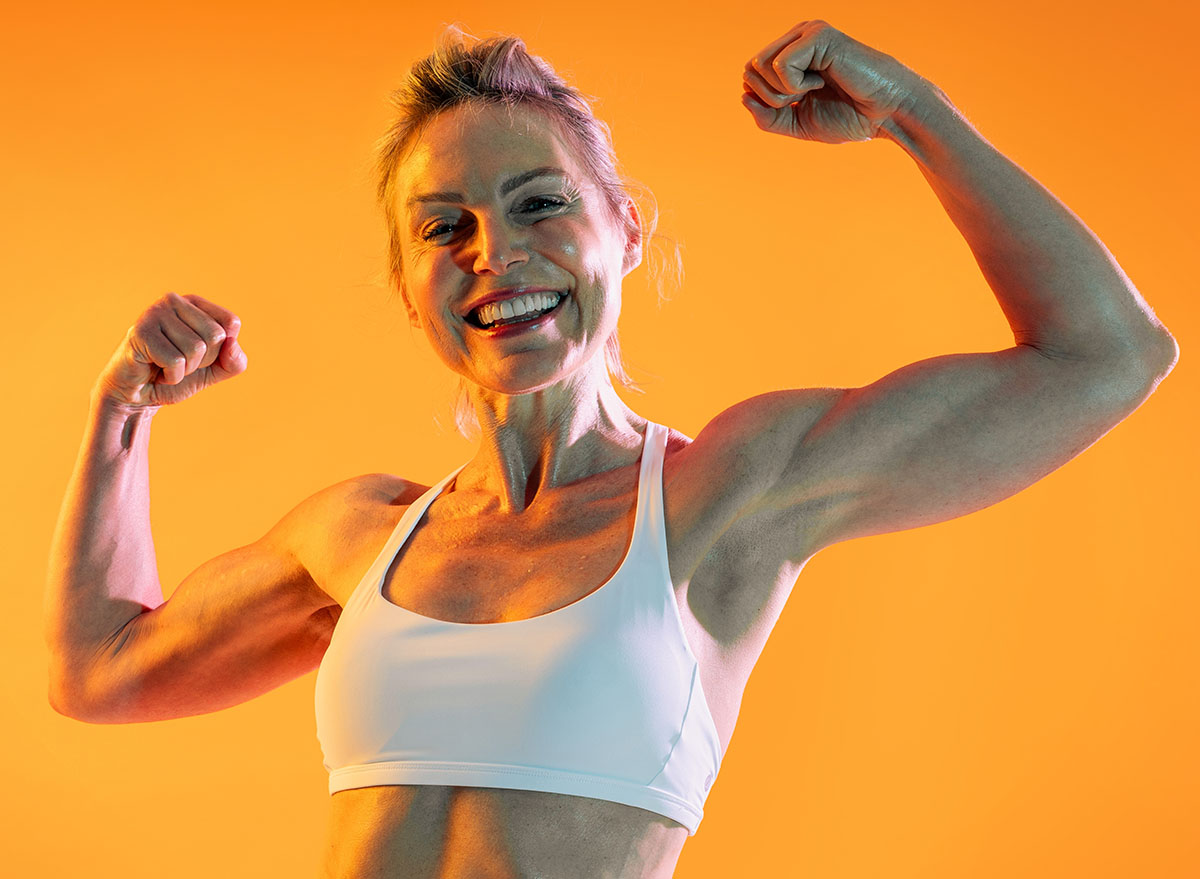4 Daily Standing Moves That Reverse Muscle Loss Faster Than Gym Machines After 50

Staying strong after 50 requires more than occasional workouts, your muscles respond best to consistent, functional movement that teaches your body to support itself through real-life demands. Machines guide the path for you, reducing the stabilizer work your joints and core rely on to stay powerful. Standing movements flip that script by forcing your muscles to coordinate, balance, and fire together in ways that rebuild strength quickly. This routine pushes your entire body to create tension, generate stability, and regain the athletic control time often erodes. Do these daily and you’ll feel stronger, steadier, and far more capable in everything you do.
These standing patterns challenge your legs, glutes, arms, and core at the same time, creating a full-body strength effect machines rarely replicate. When your body must support its own weight, stabilizers wake up, joints shift into healthier alignment, and muscle fibers recruit more fully with every rep. You’ll train your legs to carry you with more confidence, your hips to stay powerful, and your upper body to assist with balance and posture. The longer you practice these movements, the faster your strength, endurance, and coordination return, no equipment required.
Each drill teaches your body to generate strength through multiple planes of motion, something machines simply don’t offer. With every rep, you’ll notice how your posture improves, your core stays active, and your muscles engage in ways that bring back the athleticism you thought you’d lost. These are the patterns that protect you from injury, improve your daily activity, and build the kind of functional power that keeps you independent and capable. Clear even a small space, stand tall, and get ready to reclaim the strength that supports every step of your life.
Split-Stance Squat Reaches
A split-stance squat challenges your legs, hips, and core in one coordinated sequence that quickly builds functional strength. The staggered position forces your stabilizers to work overtime, training your body to stay balanced and powerful even when weight shifts unexpectedly, a skill that becomes essential after 50. Adding an overhead reach deepens the workload by lengthening your torso, opening your hips, and pulling your core into active support as you lower and rise. Each rep teaches your glutes and quadriceps to generate force evenly while your upper body builds posture and mobility. This single movement blends balance, strength, and stability so effectively that it outperforms many machine-based lower-body exercises in both muscle recruitment and long-term strength development.
How to Do It:
- Stand in a staggered stance with one foot forward, one back.
• Raise both arms overhead.
• Lower into a squat while keeping your torso tall.
• Push through your front heel to rise.
• Perform 8–12 reps per side.
RELATED: If You Can Hold a Plank This Long After 50, Your Core Is Stronger Than Most
Standing Hip Hinge Pullbacks
This move rebuilds backside strength while sharpening balance and hip control, two areas that decline quickly without intentional training. The hinge pattern teaches your glutes and hamstrings to carry more of the workload, protecting your knees and lower back from unnecessary strain. As you hinge forward, your core braces to keep your spine aligned, and the pullback motion activates your upper back to improve posture and shoulder stability. These layers of engagement compound into a full-body effect that mimics real-life lifting far better than a machine, helping you build strength that supports everyday tasks. With consistent practice, you’ll feel your entire posterior chain grow stronger, steadier, and more capable of producing power.
How to Do It:
- Stand with feet hip-width apart and arms extended forward.
• Hinge at your hips while keeping a long spine.
• Pull your elbows back as if squeezing your shoulder blades.
• Return to standing tall.
• Repeat for 10–15 reps.
Lateral Step Push Press
This standing drill strengthens your legs, hips, shoulders, and core as your body works to stabilize through movement in multiple directions. The lateral step recruits muscles that machines ignore, especially those that control side-to-side stability and protect your knees and hips. Adding an overhead push trains your shoulders to produce strength through a full range while your core tightens to keep you centered. Every rep challenges your entire body to react, balance, and generate force — the same qualities that improve daily function and reduce the risk of falls. With steady practice, you’ll restore power, coordination, and joint integrity faster than machine-based lifts ever deliver.
How to Do It:
- Stand tall with hands at shoulder height.
• Step to the side as you press your arms overhead.
• Bring your feet together as your hands return to shoulder level.
• Continue alternating sides.
• Perform 12–16 total reps.
Standing Reverse Leg Drive & Row
This pattern blends lower-body strength, upper-body activation, and deep core engagement into one efficient standing sequence. As you extend one leg behind you, your glutes fire to stabilize your hips while your standing leg sharpens balance. The rowing motion builds upper-back strength that supports posture, shoulder health, and everyday movement. Coordinating these actions forces your body to stabilize against shifting load, turning a simple move into a powerful strength-building tool. Over time, this drill restores the athletic control and muscle tone that often fade with age, giving you a stronger base of support for everything you do.
How to Do It:
- Stand tall with arms in front.
• Drive one leg straight back as you pull your arms to the side.
• Return to standing with control.
• Switch legs each rep or complete one side at a time.
• Perform 10–15 reps per side.